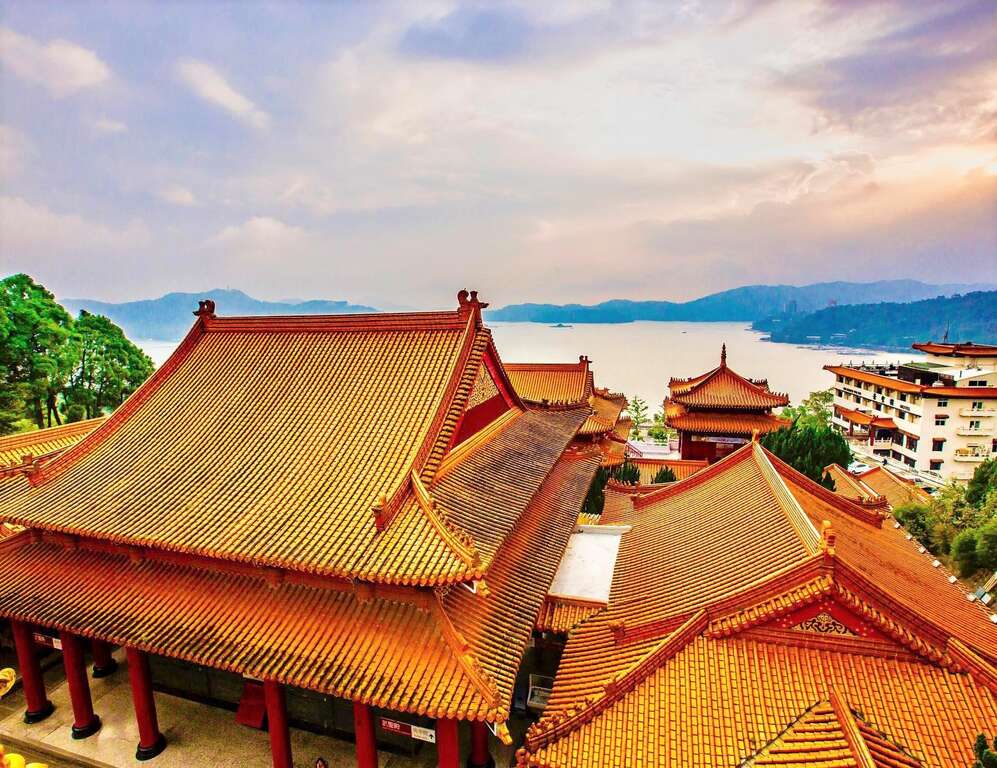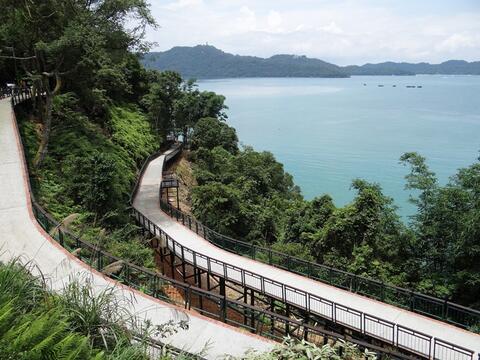Wenwu Temple
Introduction
The architecture of the temple has the palace style of northern China. It is a large and imposing structure, with three separate halls. On the second floor of the front hall is a shrine devoted to the First Ancestor Kaiji and the God of Literature; the central hall is devoted to Guan Gong, the God of War, and the warrior-god Yue Fei; the rear hall is dedicated to Confucius. This is the only Confucius Temple in Taiwan that keeps its central door open. Temple officials say that they do this because the temple is on the bank of Sun Moon Lake and has many tourists, so they keep the door open for the convenience of the visitors. The bronze statue of a seated Confucius makes this also the only Confucius temple in Taiwan that contains an image of the sage. In addition to Confucius, there are also statues of his disciples, Mencius and Zihsih. These three images originally came from Mainland China. They were taken to Japan to escape the Boxer Rebellion near the end of the Qing Dynasty; later on, they were reproduced and brought to Wunwu Temple.
Another interesting feature of the temple is the two vermillion stone lions on the two sides of the front plaza. They were donated by Wu Huo-shih, the late chairman of the Shin Kong Life Insurance Company, whose name meant "fire lion."
Year of Steps at Wenwu Temple
Before the round-the-lake road was built, the only way to get to Wunwu Temple was to take a boat to the pier below the temple and climb up a very steep flight of steps.
In early days, these steps were called the "stairway to Heaven." Completion of the road made it far easier for travelers to reach the temple, and the steps below the temple were gradually forgotten.
The administration recently renovated the steps. There are now 366 steps covering the 150-meter distance, symbolizing the 366 days in a year (including an extra day in leap year). At the step that represents the first day of each month, there is now a platform where people can stop and rest. Information related to the 24 solar periods is also carved into the steps, so that visitors can learn something about China's traditional folk culture as they slowly ascend the steps. The steps are now known as the "Year of Steps at Wunwu Temple", and make a very interesting visit.
There are also wind chimes along the steps, which are used by visitors to ask for blessings. Their function is somewhat like that of a wishing well. Visitors first go to Wunwu Temple and buy wind chimes for their specific animal of the Chinese zodiac, and then have the chimes passed through incense smoke by temple workers. Then the visitors write their names and the contents of their wishes, and go to the top of the Year of Steps to ring the chimes, and finally go down the steps and hang the chimes beside those steps that represent their birthdays, symbolizing the completion of their efforts.
Information
Opening Hours: Open all day long(after 8:00pm, please use the side entrance)
TEL: +886-49-2855122
Address: No.63, Jhongshan Rd., Yuchi Township, Nantou County Taiwán, R.O.C
Links: Official Site
Facilities
- Toilets
- Parking
- Trails
- Breastfeeding Room
How to Get There
Choose a transportation method based on your departure location.Transport
Updated:2020-09-04










